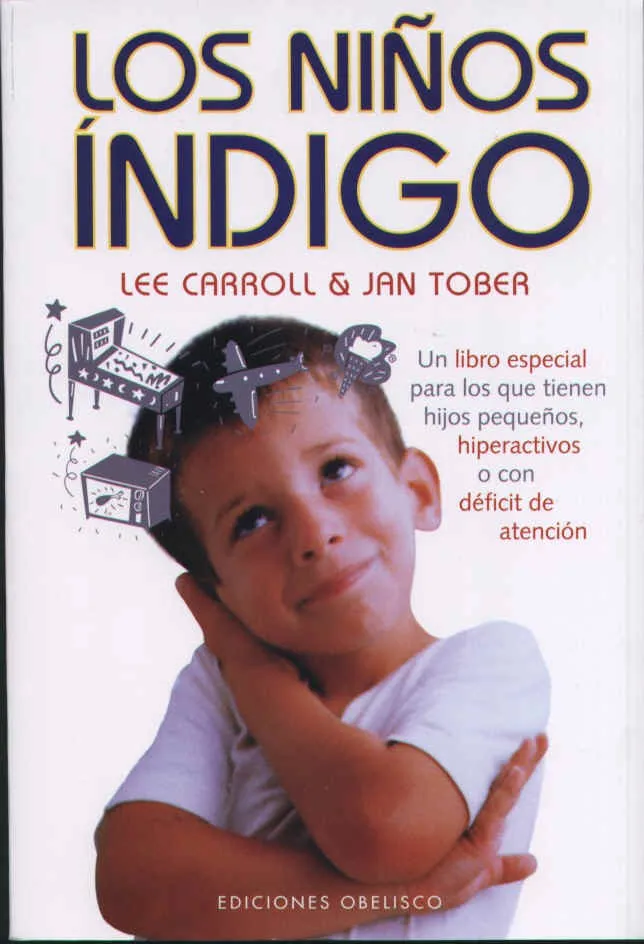
Fuente
Starting in the 80s, they began to arrive, more and more. They are spectacular children. They are coming to help the social, educational, family and spiritual transformation of the entire planet, regardless of borders and social classes. They are like catalysts to trigger the reactions necessary for the transformations. They possess a different brain structure in regard to the use of the potentials of the left (less) and right hemispheres (more). This means that they go beyond the intellectual plane, the focus of their brilliance being on the plane of action.
An indigo child is one who shows a new and unusual series of psychological attributes with a pattern of behavior not yet documented. This pattern has common and unique factors that suggest to those who interact with children (parents in particular) that they must change the way they are treated and raised in order to achieve an adequate balance. To ignore these new patterns of behavior is to create potential imbalance and great frustration in the minds of these precious new lives.
There are four different types of Indigos, each with a purpose:
- The humanist: the first is the Indigo humanist who is destined to work with the masses. They are the doctors, lawyers, professors, merchants, executives and politicians of tomorrow. They will serve the masses and are very hyperactive and extremely sociable. They will talk to everyone, always in a very, very friendly way.
The conceptual: The conceptual Indigos are more interested in projects than in people. They will be the engineers, architects, designers, astronauts, pilots and military of tomorrow. They are not clumsy, on the contrary, they are very athletic children. They are controllers and the person they most try to control is their mother if they are children, and their father if they are girls.
The artist: The Indigo Artist is much more sensitive and his body is often smaller, although that is not a general rule. They are more inclined toward art, they are very creative and they will be the teachers and artists of tomorrow.
The interdimensional: The interdimensional Indigo is much larger than the other indigos, from the point of view of the stature. You can not say anything between 1 and 2 years. They will say: "I already know" or "I can do that", or "Leave me alone". It is they who will bring new philosophies and spirituality to this world.
• It has great sensitivity
• Has excess energy
• Is easily distracted or has low concentration power.
• Needs emotionally stable and secure adults around
• Resists authority if it is not democratically oriented
• Prefers other forms of learning-for reading and mathematics in particular.
• You can easily get frustrated because you have great ideas but few resources or people willing to help you do them
• Learn at an exploratory level, and resist mechanical memorization or being a mere listener.
• It does not last long unless you are absorbed in a topic of interest.
• He is very compassionate and has many fears, such as death and the loss of his loved ones.
• If you experience failure or disappointment at a very young age, you can give up and develop a permanent block.
• They demand a lot of attention and feel that life is too valuable to pass up. They want things to happen and often force a situation in order to get what they want.
• They may become emotionally irritated by those who do not understand the Indigo phenomenon. They can not understand why people operate in ways not based on love. Even so, they are extremely resilient and skilled at helping children in need even if their help is often rejected. In youth they may have adjustment problems with other children.
• Indigo Children are often diagnosed with Attention Deficit Disorder (ADD) or some form of hyperactivity.
There are some basic rules that we must take into account so as not to lose the brightness of these children.
• Treat the Indigos with respect - Honor their existence in the family.
• Help them create their own disciplinary solutions.
• Always let them choose.
• Never despise them or make them feel small
• Always explain why the instructions you give. Listen to those explanations. Do not use the stupid phrase of "because I say so". If you use such expressions, then reconsider your instructions and correct them. They will respect you for it and wait. But if you give them authoritarian and dictatorial orders, without kindness or solid reasons, these children will defeat you. They will simply not obey or, what is worse, they will give you a list of reasons that disqualify their intentions. Honesty expire as never before.
• Become partners in your own upbringing.
• From early childhood explain everything you are doing. Maybe they do not understand, but they will perceive their conscience and their honor for them.
• Provide safety when you provide support. Avoid negative criticism. Always let them know that you will support them at all times. They will grow according to their verbalizations and will surprise you in the process. Do not simply make them do it, but let them do it with support.
• Do not tell them who they are, or who they will be in the future. Let them decide what interests them. Do not force them to enter the family office or into some kind of business because the family has been doing it for generations. These children will not be followers at all.
• The Indigos are open and honest - this is not a weakness, but their greatest strength. If you are not honest and open with them, they will remain the same with you: however, they will not respect you.
• Boredom can bring arrogance in the Indigos, so do not let them get bored. If they act with arrogance, it means that they need a new challenge and new limits. Feed your brains and keep them busy in the best way possible.
• Parents, teachers and assistants must be able to establish and maintain clear limits, and yet flexible enough to change and adjust those limits when necessary, based on emotional / mental growth, as Indigos grow rapidly. Being firm, but fair, is necessary for their good and ours.
• The message given and transmitted by adults should be more pleasant than painful, and more based on love than fear.
• Keep informed and involved in child issues.
• Avoid misunderstandings simply by giving explanations.
• Do not lose patience with your child.
• Avoid giving orders (verbs in imperative). Instead of using verbal commands, use touch to get their attention. They are very sensitive to touch (touch on the shoulder, handshake, hug, etc.)
• Keep your word
• Negotiate in each situation.

Fuente
In education and when choosing a school, we must keep in mind that we must teach children HOW to think and not WHAT to think. Our role is not to transmit knowledge, but to transmit wisdom. Wisdom is applied knowledge. When we give children only knowledge, we are telling them what to think, what they are supposed to know and what we want them to believe as truth.
When we pass on wisdom to children, we are not telling them what to think or what is true. Instead, we tell them how to find their own truth. Of course, we can not ignore knowledge when we teach wisdom, because without knowledge there is no wisdom. A certain amount of knowledge must pass from one generation to the next, but we must allow the children to discover it for themselves. Knowledge is often lost, but wisdom is never forgotten.
The old energy patterns are based on the fundamental belief that children are simple empty vessels that must be filled with knowledge by experts, the teachers. Teachers use techniques of embarrassing and comparing students, with the idea that this will give them motivation. In this atmosphere, any child who does not fit into the model is considered a problem child.
The problem with this system is that children learn to supply their need for attention and recognition in a negative way.
There are hard dysfunctions clearly associated with Indigos: Attention Deficit Disorder -, and Hyperactive Attention Deficit Disorder - ADHD (Attention Deficit Hyperactive Disorder). Indigos are frequently and wrongly diagnosed with ADHD or ADD because they refuse to obey. When we see a Clint Eastwood movie, we applaud his rebellion. However, when this same spirit is evident in our children, we give them drugs. But it is important to note that not all Indigo Children have ADD or ADHD, and that not all children with ADD or ADHD are Indigos.